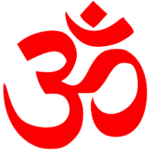
Namaste symbol
| Symbol | Namaste |
| Origin | The Freemason Namaste symbol draws its origins from both Freemasonry and Hindu culture. Freemasonry is a fraternal organization with roots in the late 16th to early 17th century, while "Namaste" is a traditional Hindu greeting and gesture. |
| Meaning | The Namaste symbol in Freemasonry may represent unity, respect, and acknowledgment of the divine within oneself and others. It signifies a spiritual connection and recognition of shared humanity. |
| Appearance | The Namaste symbol typically features two hands pressed together palms touching and fingers pointing upwards, resembling a prayer gesture. It may also include additional Masonic symbols or embellishments. |
| Colors | The colors associated with the Namaste symbol in Freemasonry are often traditional Masonic colors such as blue, white, and gold, though variations may exist based on individual interpretations or lodges. |
| Usage | The Namaste symbol may be used in Freemasonry rituals, ceremonies, and symbolism to convey reverence, brotherhood, and spiritual understanding among members. |
| History | The incorporation of the Namaste symbol into Freemasonry likely evolved over time as Freemasonry encountered diverse cultures and traditions, adopting elements that resonate with its principles of enlightenment, fraternity, and universal brotherhood. |
| Popularity | The popularity of the Namaste symbol within Freemasonry may vary among different lodges and regions, influenced by cultural diversity, individual interpretations, and the significance attributed to it by members. |
| Importance | Within Freemasonry, the Namaste symbol holds significance as a representation of mutual respect, spiritual awareness, and interconnectedness among members, reinforcing the principles of Freemasonry. |
| Complexity | While the Namaste symbol itself is simple in its appearance, its complexity lies in its layered meanings and interpretations within the context of Freemasonry, blending elements of Eastern spirituality with Masonic symbolism. |
| Emotions | The Namaste symbol evokes feelings of reverence, unity, humility, and acknowledgment of the divine presence within oneself and others, fostering a sense of spiritual kinship and mutual respect among Freemasons. |
The Namaste Symbol: More Than Folded Hands
While sometimes referred to as the “Namaste symbol,” it’s crucial to remember it’s not a single symbol but a gesture formed by bringing palms together at the heart chakra. This mudra, known as Namaste, holds deep cultural and spiritual significance in Hinduism, Buddhism, and Jainism.
Beyond the Gesture:
- Meaning: Namaste translates to “I bow to the divine within you,” acknowledging the divinity in both oneself and others.
- Significance: It represents respect, gratitude, and spiritual connection.
- Context: Used in greetings, thanks, farewells, prayer, and meditation.
Beyond a Single Form:
- Variations: Hand position, fingers, and accompanying head tilt can differ slightly across traditions and regions.
- Visual Representations: While not strictly a symbol, Namaste is sometimes depicted in art, often incorporating the hands gesture or the Om symbol.
Remember:
- It’s a respectful gesture, not just a cultural icon.
- Understanding its meaning and context deepens appreciation for its significance.